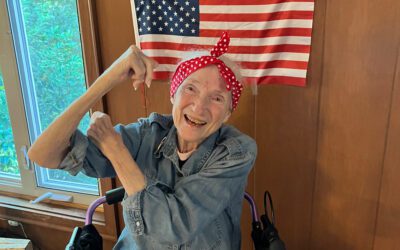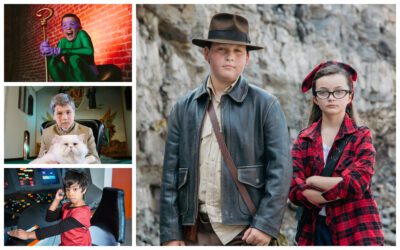[title subtitle=”words: Anita Paddock
Images: courtesy Billy Higgins”][/title]
On summer evenings during baseball season in Fort Smith, Arkansas, games are being played across the many fields that dot the city. One of the fields in Kelley Park is named after Charles Higgins, the father of Billy Higgins, a history professor at the University of Arkansas – Fort Smith.
Billy was seven in 1945 when he moved with his parents to Fort Smith, when his dad became the director of the Boys Club. “My life was shaped by 215 Wheeler Avenue,” Billy says. “It was a splendid rock building just two blocks over from Subby Valenti’s Tattoo Parlor on Towson Avenue.”
That rock building housed the Fort Smith Boys Club, complete with an indoor swimming pool and a full-sized hardwood floor gymnasium.
Hig, as Billy’s dad was called, had previously worked in Pine Bluff as a teacher and coach with a part-time job as supervisor of Taylor Field. “I remember riding in the car with my dad to collect the equipment he ‘left’ at the field after each game. He ‘left’ the equipment so the black baseball players who lived in Pine Bluff could have a chance to play ball with good equipment. My dad was one of the early baseball integrationists, and he thought everyone should have a chance to play the game.”
After their move to Fort Smith, Hig did a terrific job of promoting sports for boys. In 1948, with donations from civic minded folks, Hunt’s Baseball Field was decked out in lights at a cost of $50,000, a considerable amount of money in those days. With lights, baseball teams could compete well into the night.
“By the time I was old enough to mow the grass at Hunt’s Park, I was also picking up the trash, and playing baseball there every day. When I wasn’t on the ball field, I was in a corner reading,” Billy remembers. “That was my second love. My mother saw to that.”
In addition to Hig’s duties as director of the Boys Club, he also coached The Fort Smith Randall Victors, an American Legion baseball team. And Billy once again helped. “I was a ten-year-old bat boy for those games.”
One of the players for the Victors was Hal Smith, later known as “The Barling Darling.” He caught the attention of pro scouts and eventually became a pitcher for the St. Louis Cardinals. This further endeared Arkansas fans to the Cardinals, whose games were broadcast by the famous announcer Harry Caray on KFPW out of the Goldman Hotel on Garrison Avenue.
Caray was an entertaining announcer with a stock of pet phrases. In the winter of 1954 he visited the Boys Club on a promotional tour known as the Cardinal Caravan. The “Barling Darling” Hal Smith was working there for the winter, and Harry Caray greeted him warmly. Hundreds of boys, including Billy, sat on the gym floor waiting to hear Caray yell out his favorite phrase: “It might be, it could be, it is, a home run!”
Baseball was huge with folks from little country hamlets to big-city residents. Fort Smith also boasted immaculately groomed Andrews Field, where semi-pro teams regularly played, and “knothole” passes were given to little boys to watch through the holes in the wooden fence in exchange for shagging balls. “I still have one of my knothole passes,” Billy says. “I also chased foul balls on the roof of the grandstand.”
Billy played Jr. American Legion ball under Squeaky Smith, and his coach for American Legion ball was Clyde “Sparky” Watts, both legends in Fort Smith baseball circles. “Those were great years, and some of my teammates still live in Fort Smith.”
In 1960 Billy joined the Fort Smith Collegians, a semi-pro team that had some great players like Danny Greenfield, Jarrell Williams, and Lance Alworth. “We won the state championship and traveled to Wichita to represent the state. We went two and two.”
After joining the Air Force in March, 1961 and training as a navigator, Billy played one year of service ball at James Connally Air Force Base, but after that he stopped, concentrating instead on a teaching career and his family.
But Billy always loved the game, so he started coaching in the Babe Ruth League in 1967, eventually winning a state championship. Later he coached a Senior Babe Ruth team that also won a state championship. “Along the way, I umpired,” Billy says, and it’s clear from the smile on his face that those were good days. “Mostly Babe Ruth league games and tournaments but a few college games and one Arkansas High School All Star game at Baum Stadium.” Billy’s smile turns to laughter. “The call to the majors never came.”
Billy also volunteered to help Bill Crowder, coach at Westark College in the 1990s. Crowder won an impressive 1,000 games as a coach, and Crowder Field at the University of Arkansas – Fort Smith is named for him. “I kept learning baseball under him and his assistant Jack McKnight,” Billy says. “They taught me a little more about the game every day I was around them.”
Billy, who is now in his early seventies, parlayed his other love, reading, into becoming a history professor and an author. His book about Hal Smith, The Barling Darling, was published in 2009 by the Butler Center for Arkansas Studies. After the book’s release, there was an autograph party at Evans Boys and Girls Club on a Sunday afternoon. The late Hal Smith was there, and he and Billy signed copies of this amazing story. The place was crowded with people, young and old, waiting in line to meet this local legend.
The love of baseball seems to be passed down genetically, but it also comes in the sheer pleasure for a fan sitting on a lawn chair on a hot summer night, watching intently as the game unfolds. It’s the crack of a bat hitting a ball, and the response it brings with cheers from mamas and grandmas, dads and granddads, and kids who can’t wait to get out on the field. It’s Americana in its purest form, and one of the best parts of living in Fort Smith, in a city that loves this time honored sport.
[separator type=”thin”]
The Barling Darling tells the story of Hal Smith who achieved fame in baseball’s major leagues. Hailing from a tiny hamlet outside Fort Smith, Arkansas, he thrilled his hometown fans by playing for the St. Louis Cardinals in the 1950s.
Written by Billy Higgins with Hal Smith, it sells for $19.95 and can be purchased at local book stores or online at Amazon.com




